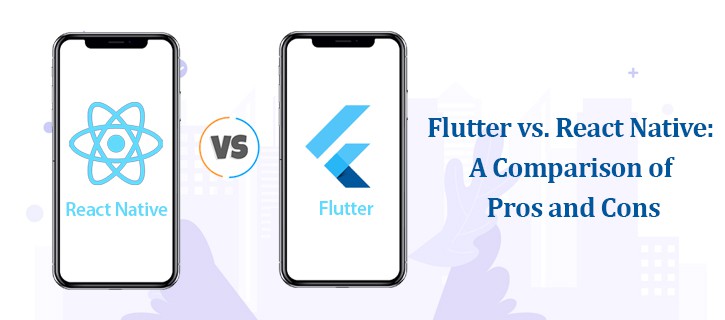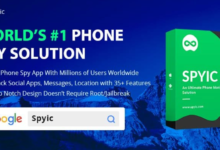

According to statistics, in 2020, mobile apps are expected to make around 188.9 billion. In 2018, the total number of worldwide app downloads exceeded 205 billion. Interestingly enough, the prediction is that the total number of app downloads will exceed 258.2 billion in 2020. Here we notice, mobile apps’ popularity is increasing day by day. Apps have become an essential part of daily life. Nowadays, there is an app for almost everything.
Cross-Platform –What is it?
There is a variety of app platform such as hybrid, cross-platform, native, and web app. Hybrid apps had been popular for a long time. Hybrid apps are CSS3, JavaScript, and HTML5 applications which have access or entrée to the phone’s hardware features through a native container like Apache Cordova or PhoneGap. However, a hybrid app does not fit into the exact user interface of iOS and Android as it does not use the native UI elements. So, they are not user-friendly. However, a cross-platform app does not face this issue as they use respective operating-system-specific UI components and also allows the developers to develop in popular languages like TypeScript or JavaScript. So, nowadays, cross-platform mobile apps are gaining popularity among users.
React Native and Flutter
Flutter and React Native are two successful and popular cross-platform technologies. It’s really hard to pick up on between the two. So, we often wonder, which platform would be the best for our business so, let’s go through a brief summary of both platforms and also its pros and cons.
React Native

React native is a cross-app development framework, which was developed by Facebook in 2013. The world saw the first public preview of react native, in 2015. Since then, it is known as one of the most popular frameworks. It ranks GitHub among the top three trendiest repositories’. Mark Zuckerberg himself once said,
“The biggest mistake we made as a company was betting too much on HTML as opposed to native.”
This statement shows what a gem React Native is! Well-known corporate giants like Facebook, Instagram, Airbnb, Bloomberg, Pinterest, Skype, Tesla, Vogue, Wix, and UberEats use React Native. When companies like these (mentioned above) trust React native, undoubtedly, it becomes a very big deal. Now we will explore some pros and cons of the React Native
Pros of React Native:
- React native allows web developers with both cross-platform deployment plus deployment to the mobile phone web as an advanced web app with the same code.
- React Native uses the distinct native UI element.
- React Native lets you develop the component in JSX; this lets XML-like elements be used directly in the code.
- Anyone can use the indistinguishable code-base to develop applications for iOS, Android, and Windows phones.
- React Native is very easy to maintain even If you have complicated projects which follow a stricter design pattern.
- It provides more stability.
- It uses a popular language – JavaScript.
- It has a vast and active community.
- It offers optimum quality plus sustainability.
- It reduces costs.
- Easy to use.
- It is open-source, free and fast.
- It lets customized code reusability.
- It has GitHub stars 66k and GitHub contributors 1694.
Cons of React Native
- You can face some issues in the process of changing HTML code to native code,
- You may need a separate code for iOS or native app.
- It was originally created for iOS, so some components for Android may need work from your end
- Fragile UI.
- The use of old-fashioned language JavaScript can provide an outdated feel.
Flutter

Flutter is an open-source modern development kit created by Google which will enable the development of mobile phone app for iOS, Android, and Google Fuchsia; a fresh platform developed by search engine giant Google.
Flutter is a modern development kit by Google that will facilitate the development of mobile apps for Android, iOS, and Google Fuchsia, a new platform being developed by Google. Flutter is junior to React Native and was launched in 2017. Like React Native, Flutter does use WebViews for translation. However, unlike React Native, it also does not use native UI elements. Flutter uses its interpretation engine on iOS or Android which draws widgets on the screen. Interestingly enough, these widgets are available in different styles. For example, it is available in the material design known from Android. The best proof of this approach is that unlike React Native, Flutter holds control over the performance, design, and quality of these widgets. On the contrary, React Native uses the operating system’s respective |UI elements which the makers have no control over. Additionally, Flutter cannot be developed with JavaScript code. It has to be developed with the object-oriented programming language dart from Google. Since Flutter creates the rendering itself, it ensures a consistent rendering performance of 60 frames per second. Indeed, it’s a very significant feature and a clear advantage over React Native. React Native had to fight specifically in the Android area again and again with performance problems.
Well-known companies or different institutions like Alibaba, Reflecting, Hamilton Musical, Jd finance, Abbey road studios app, or Google greentea use flutter.
Pros of Flutter:
- The documentation is rich.
- It is hot reload so the developers can monitor all the alterations they have made to the code,
- It is suitable for an MVP.
- It enhances overall performance plus app startup time.
- It provides access to native features.
- It’s easily learnable.
- Hot reload.
- It’s up to 50% less testing.
- The designs of the flutter framework are commendable.
- It has 35k Github stars.
- Flutter permits overwriting the code. So, you can recycle your code.
- Flutter provides a rich set of customized widgets.
- It’s open-source free and fast.
- Flutter provides the app developers a good control over the system.
- It makes communication easier.
Con of Flutter
- Flutter is not backed by a web browser. You can use it only in mobile applications.
- It has a lack of third party libraries.
- Few topics in integrating with a native external library.
- It has a middle-sized community but no as rich as React native.
Overall Idea
Flutter and React Native are two finest frameworks that are used for cross-platform mobile application development. They both have a lot of pros and a few cons. As we go through the brief description of flutter and react native, also comparisons of the pros and cons of both frameworks, I am sure; you can pick up the right one for you. However, I am of opinion that, if you require excellent native performance, richly striking UI and the advantage of using DART, then flutter is the perfect choice for you.
Furthermore, if you require a native app and implement JavaScript in the app development, in that case, React native is the ultimate choice for you.
At last, we would like to wish you the best of luck with your project.








I am fan of your website. I regularly check it.